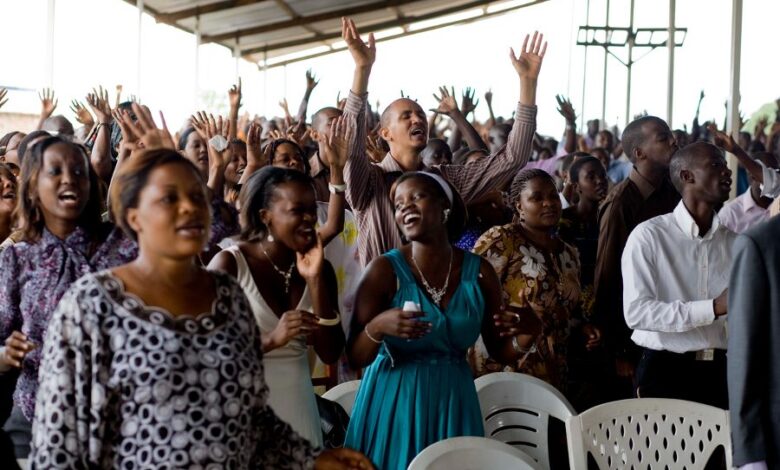PENTECOSTAL SURGE: Why Uganda’s youth are flocking to new-age churches
While the overall growth of Pentecostalism is notable, regional differences in religious affiliation remain prominent across Uganda. Karamoja and Acholi sub-regions are predominantly Catholic, with 76% and 64% of their populations, respectively, adhering to the faith.

The 2024 Population Census Report by the Uganda Bureau of Statistics (UBOS) has revealed a significant rise in the number of Pentecostals in Uganda, reflecting a broader trend across Africa. According to the report, Roman Catholics remain the largest religious group, making up 37% of Uganda’s population, followed closely by Anglicans at 30%.
However, the notable growth is within the Pentecostal and Evangelical churches, whose membership has increased from 11% in 2014 to 15% in 2024. The largest growth is among Ugandans aged 20-29, signaling a generational shift in religious affiliation.
While the overall growth of Pentecostalism is notable, regional differences in religious affiliation remain prominent across Uganda. Karamoja and Acholi sub-regions are predominantly Catholic, with 76% and 64% of their populations, respectively, adhering to the faith.
Anglicans dominate the Kigezi sub-region, while Busoga has the highest percentage of Muslims. Despite these regional strongholds, Pentecostalism is making inroads in both urban and rural areas, particularly among the youth
Cultural adaptability and appeal
While Christianity dominates Uganda’s religious landscape with 86% of the population, Pentecostal and Evangelical churches are experiencing a significant rise. Several factors contribute to this growing appeal, including changes in culture, emphasis on evangelism, and a focus on prosperity and health.
Pentecostal churches in Uganda have been quick to adapt to the changing cultural landscape, particularly among the youth. With contemporary styles of worship, modern music, and dynamic sermons, these churches have found ways to connect with younger generations, especially those aged 20-29. The vibrant, emotionally charged worship services, often featuring popular gospel music, create an engaging atmosphere that many find more relatable than the more traditional approaches of Catholicism and Anglicanism.
Cultural shifts have led to a preference for churches that feel more in tune with modern lifestyles, and Pentecostalism’s ability to evolve with societal trends has made it a major force in the Ugandan religious scene. Traditional religious institutions, such as the Catholic and Anglican churches, have been slower to modernize, potentially alienating younger members.
Focus on evangelism and media outreach
A key driver behind the growth of Pentecostalism is its strong emphasis on evangelism. Pentecostal and Evangelical churches have become well-known for their active outreach programs, both on the ground and through media platforms. The rise of tele-evangelism, radio broadcasts, and social media has allowed Pentecostal leaders to spread their message far and wide, reaching audiences that traditional churches might not have accessed as effectively.
Many Pentecostal churches prioritize direct engagement with the public, frequently holding revival meetings, open-air crusades, and community outreach programs that attract new converts. Their dynamic approach to evangelism, combined with their use of modern technology, has helped them tap into a broad audience, including those disillusioned with other religious institutions.
The prosperity gospel and the promise of miracles
A significant factor contributing to the rise of Pentecostalism in Uganda is its focus on prosperity, health, and the promise of miracles. In a country where many people face economic hardship and health challenges, the Pentecostal message of hope, transformation, and divine intervention resonates deeply. The belief that God can bring tangible improvements to one’s life—whether through financial prosperity, healing, or other blessings—has attracted large numbers of believers.
This “health and wealth” gospel provides comfort and optimism in difficult times, offering a compelling alternative to traditional religious practices that may not emphasize such immediate, personal rewards. For many, the hope of a better future, combined with powerful spiritual experiences, has made Pentecostal churches a preferred choice.
Conclusion
The rise of Pentecostalism in Uganda is driven by its ability to adapt to cultural changes, its emphasis on evangelism, and its focus on prosperity and hope. As the country continues to grapple with economic and social challenges, Pentecostal and Evangelical churches are likely to continue growing, offering a modern, dynamic approach to faith that resonates with many Ugandans, especially the younger generation.
The increase from 11% to 15% over the past decade marks a significant shift in Uganda’s religious landscape, highlighting the importance of understanding these new dynamics as Pentecostalism continues to influence the country’s social and spiritual fabric.






